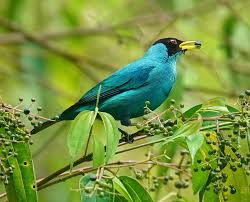The Green Honeycreeper, scientifically known as Motacilla spiza, was formally introduced to the world of taxonomy by the renowned Swedish naturalist Carl Linnaeus in 1758. Linnaeus, in the tenth edition of his Systema Naturae, bestowed upon this avian marvel its distinctive binomial name, with the type locality specified as Suriname. The specific epithet, derived from Ancient Greek, translates to a common finch.

Linnaeus’s inspiration for this taxonomic classification came from the “green black-cap fly-catcher” described and illustrated by English naturalist George Edwards in his 1743 work, A Natural History of Uncommon Birds. However, it wasn’t until 1853 that German naturalist Ludwig Reichenbach erected the genus Chlorophanes to encompass the Green Honeycreeper. The name Chlorophanes combines the Ancient Greek words khlōros, meaning green, with -phanēs, meaning showing.

A significant milestone in our understanding of the Green Honeycreeper’s evolutionary context occurred in 2014. A comprehensive molecular phylogenetic study of the tanager family Thraupidae revealed that the Green Honeycreeper shares a sister species relationship with the Golden-collared Honeycreeper (Iridophanes pulcherrimus). This discovery added a fascinating layer to the narrative of this bird’s place in the avian family tree.



